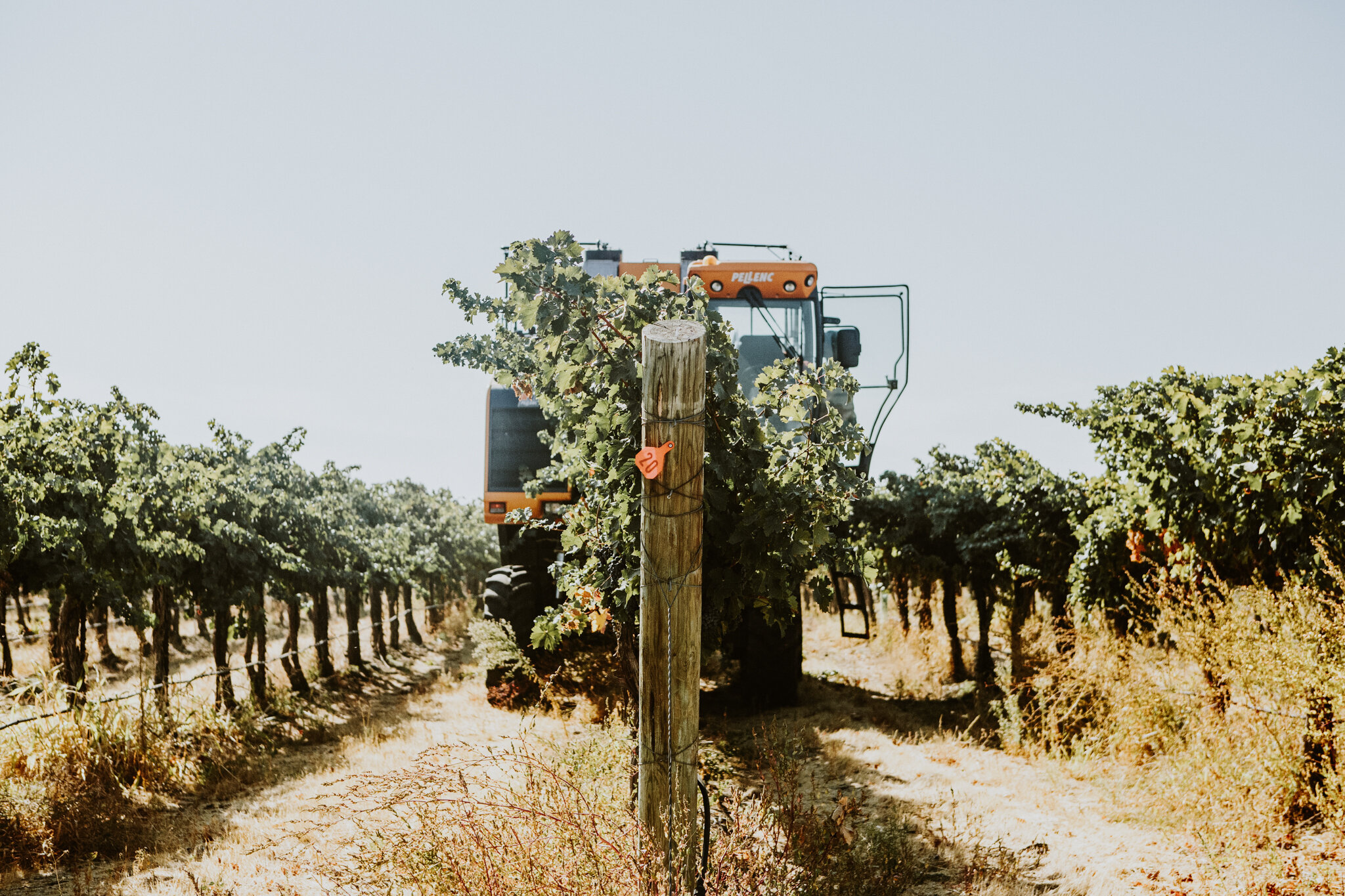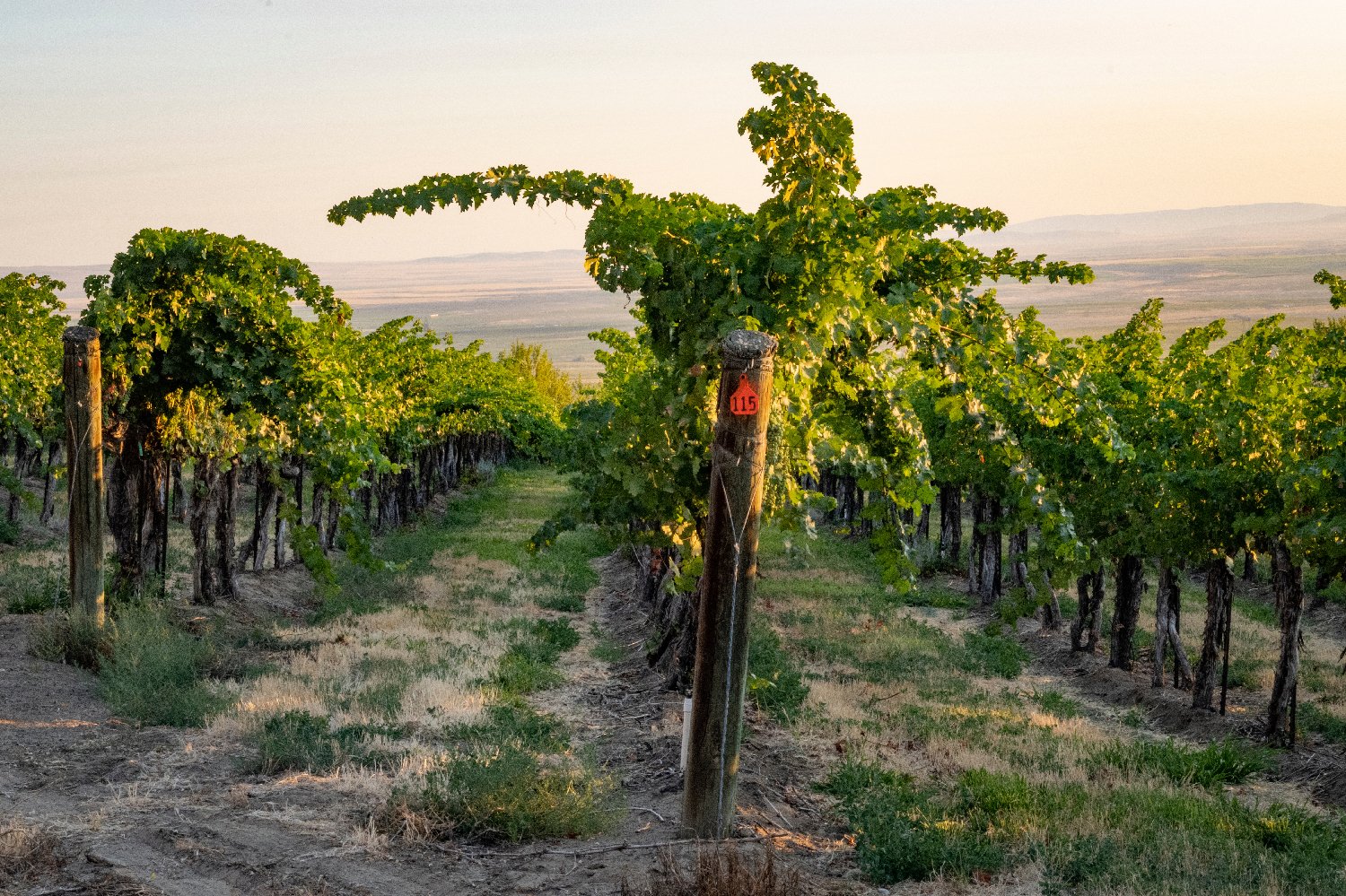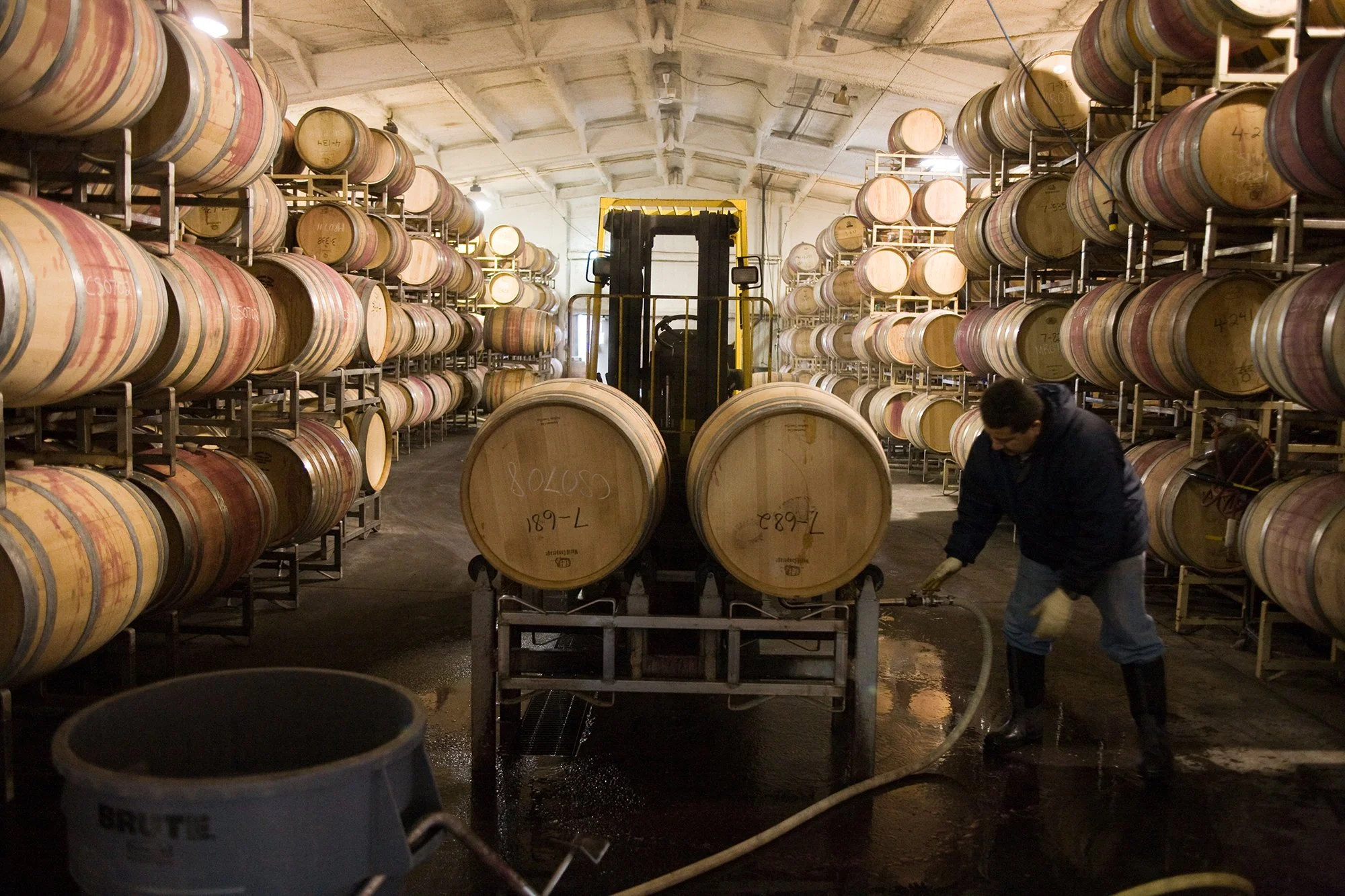
Winemaking & Vineyards
At Canoe Ridge, our passion lies in producing exceptional chardonnay, merlot, and cabernet sauvignon. Our historic winery is located in the heart of Walla Walla, Washington, with a production capacity of 70,000 cases annually.
The majority of our cooperage is French oak, rounded out by American and Hungarian oak, adding soft toasted notes to our wines as they age. However, aging in oak is more complement than necessity. Our vineyard and the Horse Heaven Hills appellation bear inherently beautiful fruit with fine tannins. We let the land take the lead.
Our Vineyards
Bone-dry deserts, upriver winds, and long sunny days create the perfect conditions for growing wine grapes in the Horse Heaven Hills. Perched on a breathtaking ridge above the roaring Columbia River, our own-rooted vines, planted in 1989, grow on a sloping ridge at 425-740 feet in elevation. Fine tannins and deep, concentrated fruit flavors put our region on the map, synonymous with some of the most acclaimed wines in the Northwest
Canoe Ridge Vineyard
The 181-acre Canoe Ridge Estate is located in the Horse Heaven Hills AVA on a slope above the Columbia River. Sweeping, river-driven winds keep the vine canopies dry while tempering summer temperatures for ideal ripening. The vineyard has the advantage of maturity, yielding arguably the best merlot in the best merlot-producing region in the country, in addition to award-winning chardonnay, cabernet sauvignon, and more.
Planted Varieties:
Merlot, Cabernet Sauvignon, Malbec, Syrah, Chardonnay, Petite Verdot, and Cabernet Franc.
Soil:
On Canoe Ridge Vineyard, the sandy loam ranges in depth from 18 inches to five feet. This mixture allows the vine roots to drill deep for nutrients while providing excellent drainage.
Topography:
The vineyard is located at a wide expanse of the Columbia River, which moderates the vineyard temperature in both summer and winter from hot and cold extremes. During winter, the moderating effects of the river keep Canoe Ridge an average of 10 degrees warmer than other parts of the Columbia Valley.
The Benches
Vineyard
Formerly known as Wallula Vineyards, The Benches are located 20 minutes southeast of Pasco on the Washington side of the Columbia River. The vineyard is comprised of 27 geologically formed tiered benches created 20,000 years ago by the Great Missoula Floods. The unique and rugged terrain of The Benches is a truly breathtaking site, making it one of the most picturesque vineyards in the state.
Planted Varieties:
The vineyard is divided into more than 60 blocks producing more than 15 different grape varieties. Varying elevations provide unique microclimates to match each grape variety. At the cooler, top portion are the whites: riesling, chardonnay, and pinot gris. Midway there are the warmer climate Merlot, Cabernet Franc, and Petit Verdot. At the lowest and hottest tiers are Cabernet Sauvignon, Syrah, Grenache, and Malbec. Other more exotic varieties (Sangiovese, Mourvedre, etc.) are planted in small quantities on various slopes of the vineyard.
Soil:
Sandy loam.
Topography:
The naturally formed benches start at an elevation of 1,400 feet and step all the way down to the shore of the Columbia River.
Alder Ridge Vineyard
Alder Ridge is one of the state’s largest and most coveted vineyards, set on a rolling plain atop a steep bluff above the Columbia. Its first vines were planted 1997. Natural wind and air drainage protect the vines from dramatic weather changes, both in the summer and winter. Alder Ridge is known for exceptionally long hang time, with a moderating effect of the river on summer heat spikes and winter freezes, giving the cabernet for which the vineyard is known tougher skins and firm tannins.
Planted Varieties:
Cabernet Sauvignon, Merlot, Chardonnay, Syrah, and specialty vines totaling 28 varieties, including some of Washington’s most sought-after Rhône varieties.
Soil:
Bone-dry desert averaging four inches of annual rainfall. Sandy soil.
Topography:
Elevation ranges from 300 to 1,000 feet. South-facing, differing slopes offer a wide range of exposure offerings. Considered a warmer vineyard site, it is usually one of the last vineyards to be picked, mostly because of the dramatic dips in temperature at night in fall.






